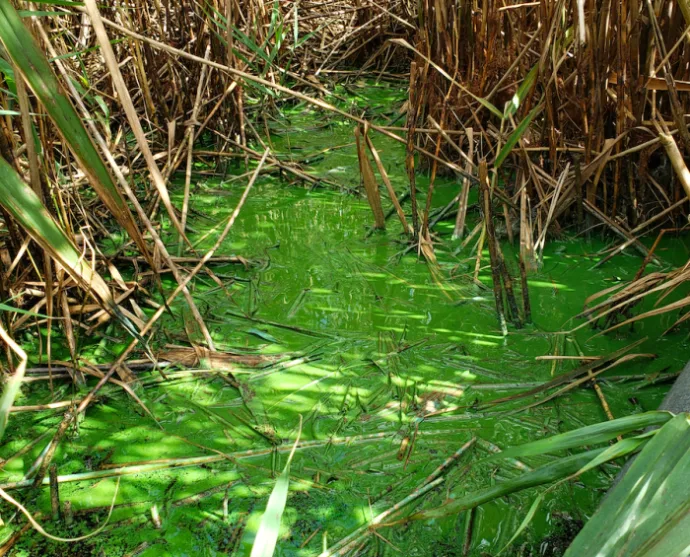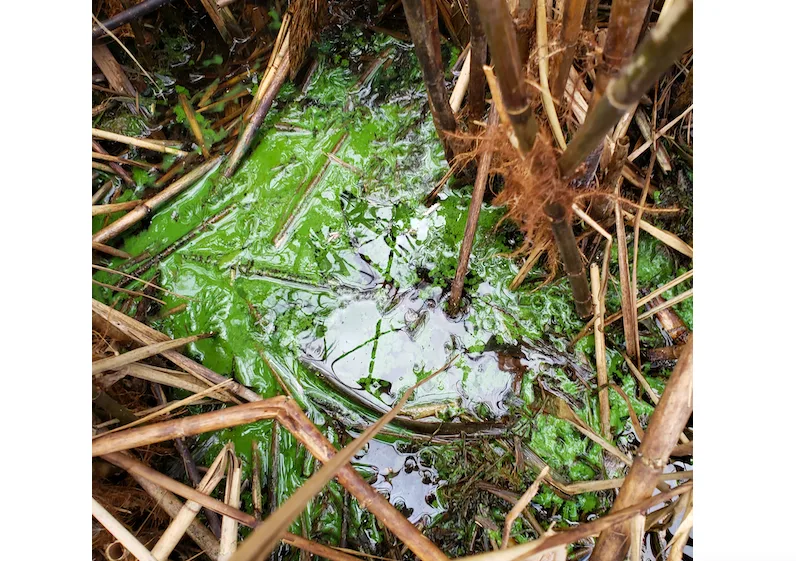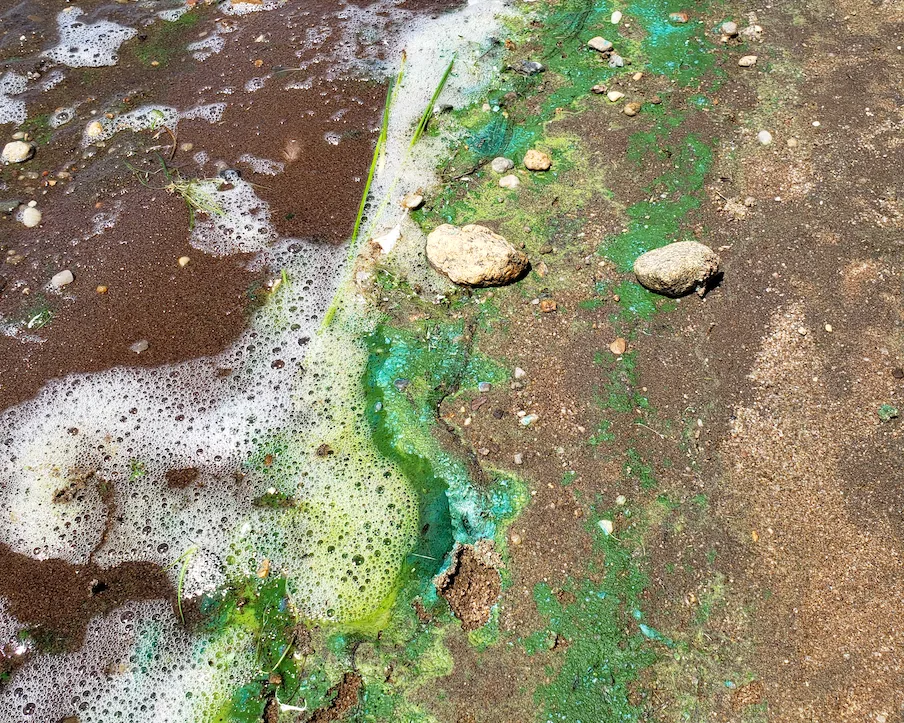
'Very Fast Death Factor' being released from algal blooms, scientists find
Experts say that toxin production is correlated with periods of rapid harmful algal bloom growth, which will become more prevalent as the climate warms.
Many have heard of the troublesome algal blooms that are impacting both marine and freshwater ecosystems. These harmful blooms occur when a number of factors, such as sunlight and warm water temperatures, reach favourable levels that allow algae to grow more rapidly than other aquatic species.
Harmful algal blooms are occurring more frequently as the atmosphere warms, which depletes the amount of oxygen in the water and blocks the sunlight from reaching other organisms. From poisoning dogs to creating a stench that can be smelled miles away, scientists say that algal blooms are a serious environmental issue that will become more prevalent as the climate warms.
A study published in Lake and Reservoir Management has now added another item to the growing list of concerns: a toxin called anatoxin-a (ATX) has been found in the air for the first time after tests were conducted near a Massachusetts pond with large algal blooms.

Credit: RJ Turcotte
Cyanobacteria (blue-green algae) can grow in almost every type of habitat and can produce a number of toxins, including ATX. The study’s researchers were particularly concerned about ATX because it is neurotoxic and can rapidly cause tremors, convulsions, paralysis, and death in humans and animals, according to the National Institutes of Health (NIH).
Due to the severity and rapid onset of symptoms, the NIH says that there is no specific antidote. These severe symptoms helped this toxin earn its informal moniker: Very Fast Death Factor.
While exposure to this toxin typically occurs from recreational aquatic activities and drinking contaminated water, the researchers say that their study is the first report of airborne ATX collected outside an aquatic ecosystem.

Credit: RJ Turcotte
Glass fibre filters were used to collect air samples during an active harmful algal bloom in 2019 at Capaum Pond on Nantucket Island, MA. The toxin was also found in water samples, with the concentration of ATX fluctuating from 0.13 to 2.96 nanograms per mL.
The study says that the air samples with the highest concentrations of ATX were taken during a high wind event with gusts measuring 30 km/h, with an average of 0.87 ng per filter. The materials that transported the toxins through the air were not investigated in the study and the researchers say that it is unknown if ATX travelled into the filters by attaching to other particulate matter, dissolving in water droplets, or being contained in bacteria.
ALGAL BLOOM CONCERNS IN A WARMING CLIMATE
Researchers say that the human health risks from harmful algal blooms will become an increasingly serious public health issue as the climate warms. “Toxin production is correlated with periods of rapid growth (blooms) and 25 per cent to 70 per cent of blooms may be toxic,” states the NIH.

Credit: RJ Turcotte
“Harmful algal blooms and climate change go hand-in-hand. As the climate warms and causes water temperatures to rise in our ponds, streams, and estuaries, it creates longer stretches of favourable conditions for cyanobacteria populations to increase,” RJ Turcotte, one of the study’s authors and Nantucket Waterkeeper for the Nantucket Land Council, said to The Weather Network.
“Cyanobacteria, also known as "blue-green algae", are the drivers of many of our harmful algal blooms and produce toxins that in high concentrations are harmful to wildlife, humans, and domesticated animals. Rising temperatures combined with cultural eutrophication are driving more frequent, longer-lasting harmful algal blooms. It is a complex problem, but we are learning more every day and are confident we can address these challenging conditions and reduce the prevalence of harmful algal blooms in our surface waters.”
STAYING SAFE FROM ALGAL BLOOMS
Water authorities actively monitor lakes, ponds, and other bodies of water to protect the public from encountering harmful algae blooms. The Government of Ontario states that a cautious approach should be taken when blue-green algae are spotted in a body of water due to the potential risk of toxins.
“If you suspect a blue-green algal bloom: assume toxins are present, avoid using, drinking, bathing or swimming in the water (call your local health unit for swimming advisories), restrict pet and livestock access to the water. Contact your local health unit for information on health risks associated with blue-green algal blooms.
Thumbnail credit: RJ Turcotte

